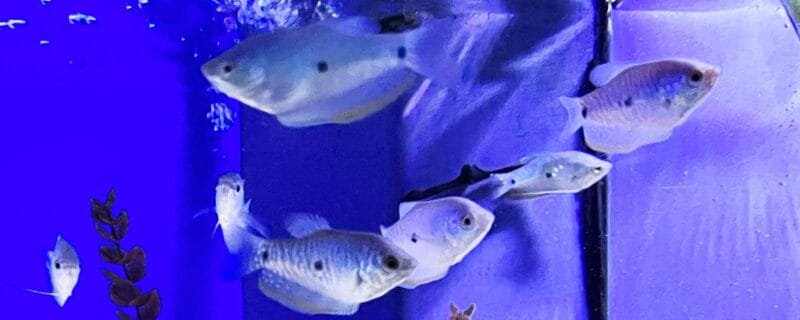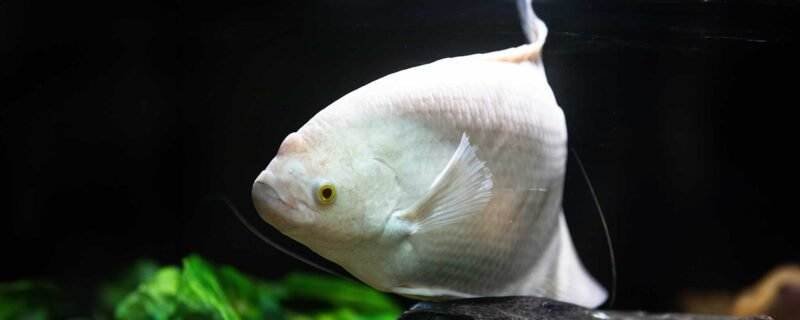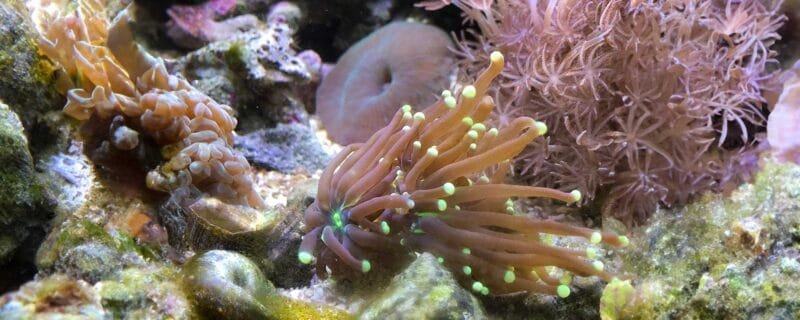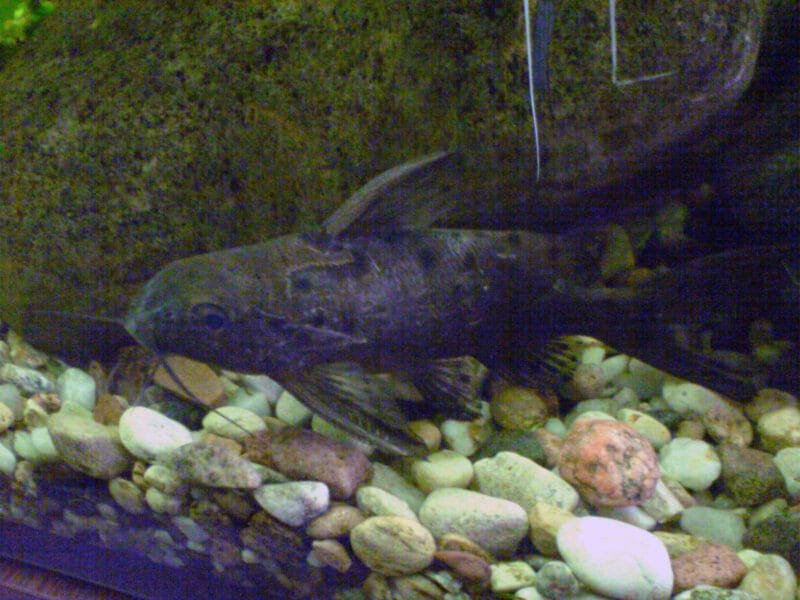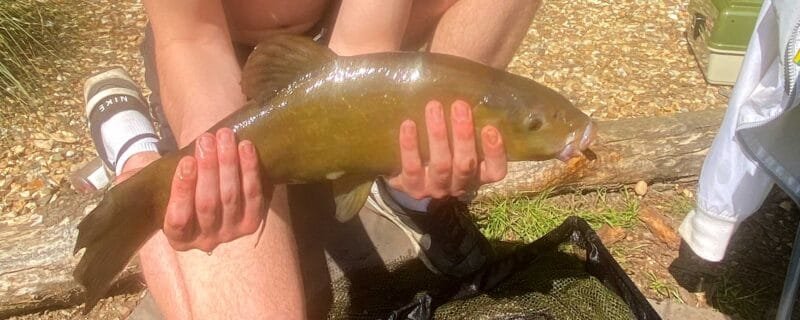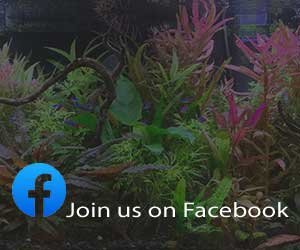The Dwarf Gourami is one of the most vibrant and beloved freshwater fish in the hobby, known for its iridescent coloration and peaceful personality. Its Latin name, Trichogaster lalius, places it within the family Osphronemidae, which also includes close relatives such as the Honey Gourami (Trichogaster chuna), Pearl Gourami (Trichopodus leerii), and the Three-Spot Gourami (Trichopodus trichopterus). This small labyrinth fish is a gem for both beginner and seasoned aquarists looking to add beauty and calm energy to a community tank.
Native To:
Dwarf Gouramis originate from the slow-moving waters of South Asia, particularly India, Bangladesh, and West Bengal. They inhabit densely vegetated streams, rivers, and rice paddies where oxygen levels may be lower—making their labyrinth organ incredibly useful.
Size and Lifespan
Dwarf Gouramis typically grow to around 3.5 inches (9 cm) in length, making them an ideal centerpiece for smaller community aquariums. With proper care, they can live for 4 to 5 years, though stress and poor water quality can shorten their lifespan significantly.
Diet
These omnivores are not picky eaters. In the wild, they feed on algae, small insects, and invertebrates. In the aquarium:
-
Staple Diet: High-quality flake food or micropellets
-
Supplements: Frozen or live foods like bloodworms, brine shrimp, and daphnia
-
Vegetable Matter: Blanched spinach or spirulina flakes are great additions
Feeding a varied diet helps to maintain their color vibrancy and overall health.
Sexing
Sexing Dwarf Gouramis is relatively straightforward:
-
Males are more colorful, typically displaying bright blue with red or orange vertical stripes. Their dorsal fins are longer and pointier.
-
Females are more subdued in color—usually silvery or pale—and have shorter, rounded dorsal fins.
When buying a pair, ensure the male is not overly aggressive toward the female, especially in smaller tanks.
Breeding
Dwarf Gouramis are bubble nest builders. The male constructs a floating nest using air bubbles and plant material, often under floating plants like duckweed.
Breeding Conditions:
-
Water Temp: 80–82°F (27–28°C)
-
pH: 6.5–7.5
-
Tank Setup: Provide fine-leaved plants and low water movement. Dim lighting is helpful.
-
Process:
-
The male entices the female under the bubble nest.
-
After a brief spawning embrace, eggs float up and are caught by the male and placed in the nest.
-
The male guards the nest aggressively until fry hatch (within 24–36 hours).
-
Fry should be fed infusoria or powdered fry food initially, transitioning to baby brine shrimp as they grow.
Water Conditions
Dwarf Gouramis prefer warm, clean, and slightly soft to moderately hard water.
-
Temperature: 77–82°F (25–28°C)
-
pH Range: 6.0–7.5
-
Hardness: 4–10 dGH
-
Filtration: Gentle flow is essential; too much current can stress them.
-
Tank Size: Minimum 10 gallons for a pair; 20+ gallons recommended for a community setup.
Always ensure excellent water quality—these fish are sensitive to ammonia and nitrites.
Ease of Care
Beginner-friendly but requires stable water parameters and peaceful tankmates. They are susceptible to Dwarf Gourami Iridovirus (DGIV), a fatal disease with no known cure. Quarantine new fish and buy from reputable breeders to avoid outbreaks.
Community Compatibility
Dwarf Gouramis are generally peaceful but males can be territorial, especially in small tanks. Avoid housing multiple males unless the aquarium is large and well-planted.
Ideal Tankmates:
-
Peaceful Tetras (e.g., Neon, Ember)
-
Otocinclus
-
Cherry Barbs (avoid nippy species like Tiger Barbs)
-
Kuhli Loaches
Avoid fin-nipping or aggressive species, and ensure enough space and hiding spots for each fish.
Species Variations
The Dwarf Gourami has been selectively bred into several stunning color varieties:
-
Powder Blue Dwarf Gourami: Solid light blue with minimal striping
-
Flame Dwarf Gourami: Deep red body with blue fins
-
Neon Blue Dwarf Gourami: Intense electric blue with red highlights
-
Rainbow Dwarf Gourami: A mix of red, blue, and orange tones
-
Albino Dwarf Gourami: Pale coloration with red or pink eyes; less common and slightly more sensitive to light and stress
Each color morph retains the same care requirements, though males of any variety can become aggressive toward other males if housed in close quarters.
Is It Good for a Community Tank?
Yes—with caveats. A single male (or a male with a female) in a well-planted tank is ideal. With proper planning and tank layout, they make excellent centerpiece fish for peaceful community setups.
Conclusion
The Dwarf Gourami (Trichogaster lalius) is a dazzling, intelligent, and rewarding freshwater species. Whether you’re just getting started in the aquarium hobby or adding new charm to a seasoned tank, these fish bring both color and personality. Their relatively small size, ease of feeding, and ability to coexist with peaceful species make them a standout choice.
Just remember to maintain consistent water quality, choose tankmates carefully, and enjoy observing the fascinating behaviors—from bubble nest building to their social interactions.

